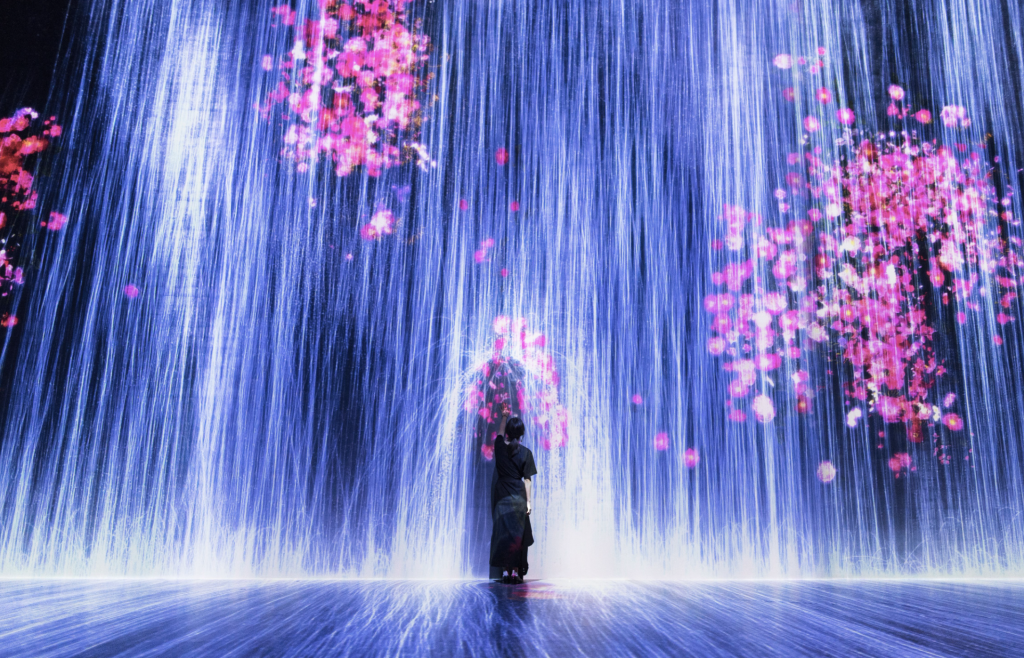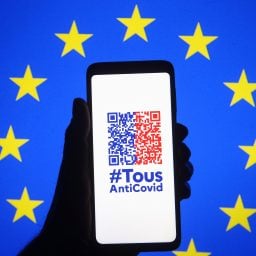Every week, Artnet News brings you The Gray Market. The column decodes important stories from the previous week—and offers unparalleled insight into the inner workings of the art industry in the process.
In the final Monday edition of this column, which is moving permanently to Wednesdays (yes, really) starting next week, let’s consider how a cure can divide markets as surely as a disease…
INJECTING APPEAL
As vaccination campaigns ramp up around the United States, more and more businesses are trying to do well by doing good in a whole new way: by offering special perks to consumers who can prove they’ve been inoculated against everyone’s least favorite spike protein. But while a broadening range of national corporations and local entrepreneurs are joining in the effort, so far there seems to be little interest from inside the art industry—another subtle reminder that connecting with a wide audience rarely rates as a priority in the realm of high culture.
Last weekend, the New York Times put together a de facto roundup of the nation’s commercial nudges toward the needle. The most hotly discussed offer came from Krispy Kreme, which is offering one complimentary glazed donut per day to anyone with a completed vaccine card at any of its roughly 12,000 locations across the U.S. for the rest of 2021.
This sugary stratagem led Dr. Leana Wen, the former health commissioner of Baltimore, to chide Krispy Kreme on Twitter for leveraging “a treat that’s not good for health if eaten every day.” The exchange sparked a social-media flame war so intense and far-reaching that it attracted coverage from such hallowed publications as the Washington Post.
(Before I move on, please join me in taking a moment to process just how indecipherable the last two paragraphs would be to literally every person walking the earth as recently as 2005.)
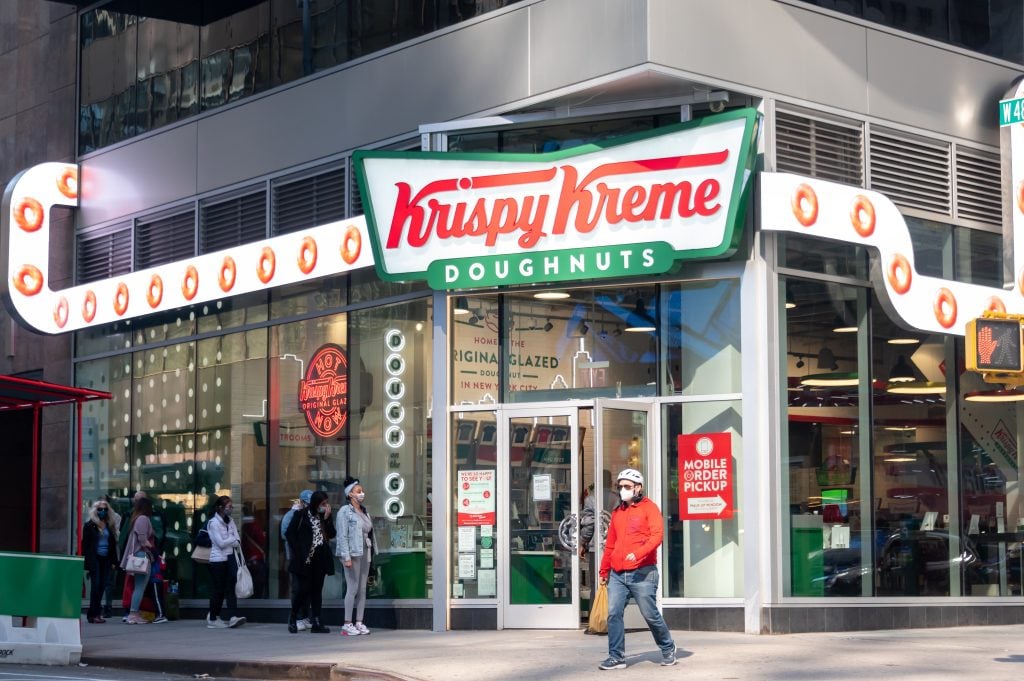
Customers line up outside Krispy Kreme in Times Square days after the mega-bakery began offering a free glazed donut per day to anyone with proof of vaccination, sparking a controversy we in the art world are unlikely to replicate on multiple levels. (Photo by Noam Galai/Getty Images)
Plenty of other American businesses are trying to boost inoculation rates and their own bottom lines at the same time. Chobani has partnered with vaccination sites around the country to hand out free yogurt to the freshly injected. Regionally, Cleveland’s Market Garden Brewery (an important part of the Schneider family’s holiday traditions in the years before my parents moved to Atlanta) will serve up 10-cent beers to the first 2,021 patrons carrying a valid vaccine card.
Elsewhere in the Midwest, a franchise of bars featuring retro arcade games is handing out five bucks’ worth of free plays to the inoculated via a promo dubbed (I kid you not) “Tokens for Poke’ns.” A similarly spirited rhyming campaign is being run by (ahem) a specialty botanical dispensary in Michigan called the Greenhouse of Walled Lake.
Call these initiatives minor, call them ridiculous, but at least the ruthless logic of capitalism is working to coax the population to a universally beneficial destination for once. After all, the sooner the U.S. (and the world) manage to reach herd immunity, the sooner the buying and selling that drives so much of contemporary life can ramp back up to its pre-shutdown levels (and beyond).
I have a long list of reservations about the wisdom of resurrecting that same cultural mindset on the other side of this crisis; I have no reservations at all about pressing every button on the dashboard that might help return public health to a point where our most urgent conversation can become “how to live” rather than “how not to die in, like, the next two weeks.”
Yet as of last Friday afternoon, neither I nor any of my Artnet News colleagues was aware of a single art business—either for-profit or nonprofit—offering similar perks to promote vaccination. While I don’t find this especially surprising, I do think it’s more revealing than it might seem at first blush.
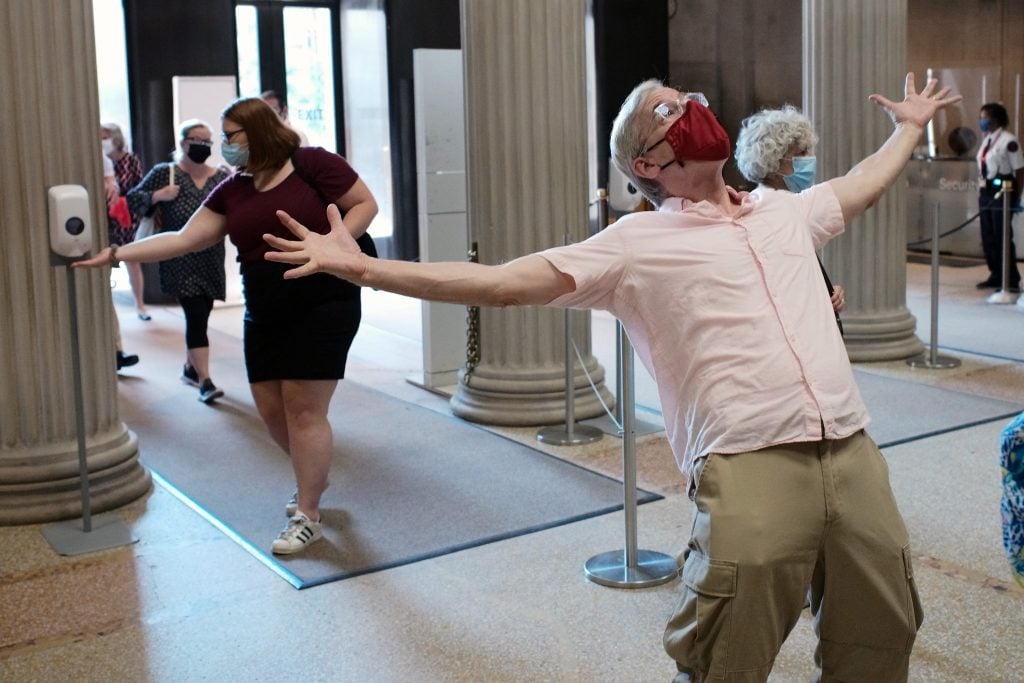
Visitors enter the newly reopened Metropolitan Museum of Art. Photo by Taylor Hill/Getty Images.
CROWD CONTROL
Ultimately, any pro-vaccination campaign aims to motivate a large number of people (especially people who might not otherwise do so) to get the needle. You’re certainly entitled to feel some type of way about the fact that entrepreneurs hawking donuts, beer, and video games are doing more targeted outreach to the average American than businesses offering encounters with art. But it is a fact so far, and we can see the evidence playing out in real time via which businesses are offering these deals and which aren’t.
In many cases, it makes perfect sense for the art industry not to deploy vaccine-related discounts or freebies. Art sellers generally have no economic incentive to try to get as many people as possible through the door, because only a small handful of high-earners can actually buy their scarce, expensive goods in the first place. I’m pretty sure, for example, Hauser & Wirth would not move an appreciably larger number of paintings this year by offering a free Allan Kaprow tea towel to anyone with a vaccination certificate.
Still, the calculus of crowds shifts when we look at cultural businesses like art fairs and museums.
Although fair organizers generate the majority of their revenue from exhibitor fees and sponsorships, selling tickets to the general public remains a meaningful component of the profit picture. This is the main reason dealers and their staff tend to lament the weekend days of these events, when VIPs and potential new clients are replaced by recreational art lovers and tourists. (For now, though, the only inoculation-based perk in the sector I’ve heard of is being allowed inside the fair at all.)
Entry fees are an even heftier part of the business model for many US art institutions, which have been struggling to absorb severe losses at the gate ever since the original round of shutdown orders went into effect in spring 2020. Some museums unveiled promo offers when they reopened last fall—the Whitney implemented pay-what-you-wish admission for its entire first month back, for example—but so far there appears to be little movement on inoculation-related perks across the sector.
The only other players in the fine-art space that might lean into this tactic are the new breed of ticketed experiential art centers, such as Artechouse and Superblue (which is scheduled to debut its starry Miami site with installations by James Turrell, teamLab, and Es Devlin later this month).
Like many US museums, engaging the masses is foundational to this business model and the populist rhetoric around it. Their immersive exhibitions don’t just accommodate everyone; they need everyone to make the financial side work. So why not sweeten the deal for anyone who can show proof they’ve received a shot?
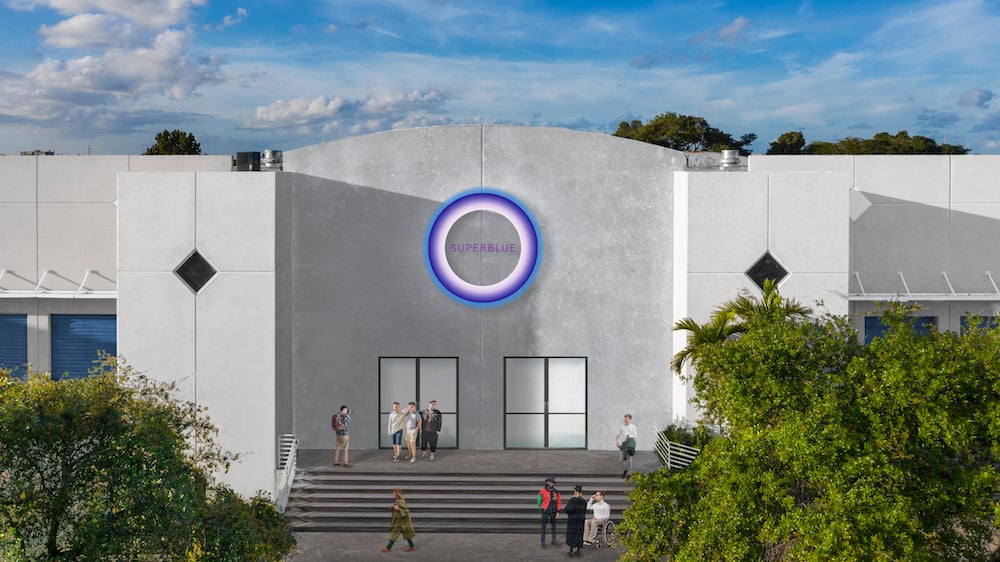
Experiential Art Center in Miami, Façade Rendering Courtesy of Superblue.
Photo: Moris Moreno
It seems like discounts on ticket prices would make the most sense for all three of these types of art businesses. The alternatives feel gimmicky, unworkable, or downright desperate to me. Although TEFAF already canceled its 2021 New York editions, just imagine if its brain trust tried to incentivize paying visitors to attend its flagship Maastricht fair this fall by offering anyone with a vaccination card one of their industry-favorite freshly shucked oysters. From a branding perspective, the parts… wouldn’t exactly fit.
I’m not suggesting art professionals of all types don’t want either the US or the rest of the world to reach herd immunity ASAP. Of course they do.
It’s also entirely possible crowd-centric art organizations could begin implementing vaccine-related perks in the near future. Widespread availability (relatively speaking) of the shots only rolled out in New York last week; it is still not yet a reality in California, where many cultural institutions in Los Angeles and San Francisco only recently received the green light to reopen for the first time since last spring.
Yet even when the U.S.’s inoculation campaign reaches full strength later this year, I expect a wide gap to separate the art economy and the rest of the economy when it comes to incentivizing vaccines through commerce. The reasons for this likely separation speak volumes about the art trade’s target audience, as well as how ineffective its incentives would likely be to everyone else. As we inch closer to emerging from the fog of crisis, it’s worth re-evaluating how this partitioning is impacting the American art world—and how happy each of us is with the answers.
[The New York Times]
That’s all for this week. ‘Til next Wednesday, remember: If someone hasn’t spent much of the past year thinking about big, scary questions, how much do you want to trust them in the years to come?
